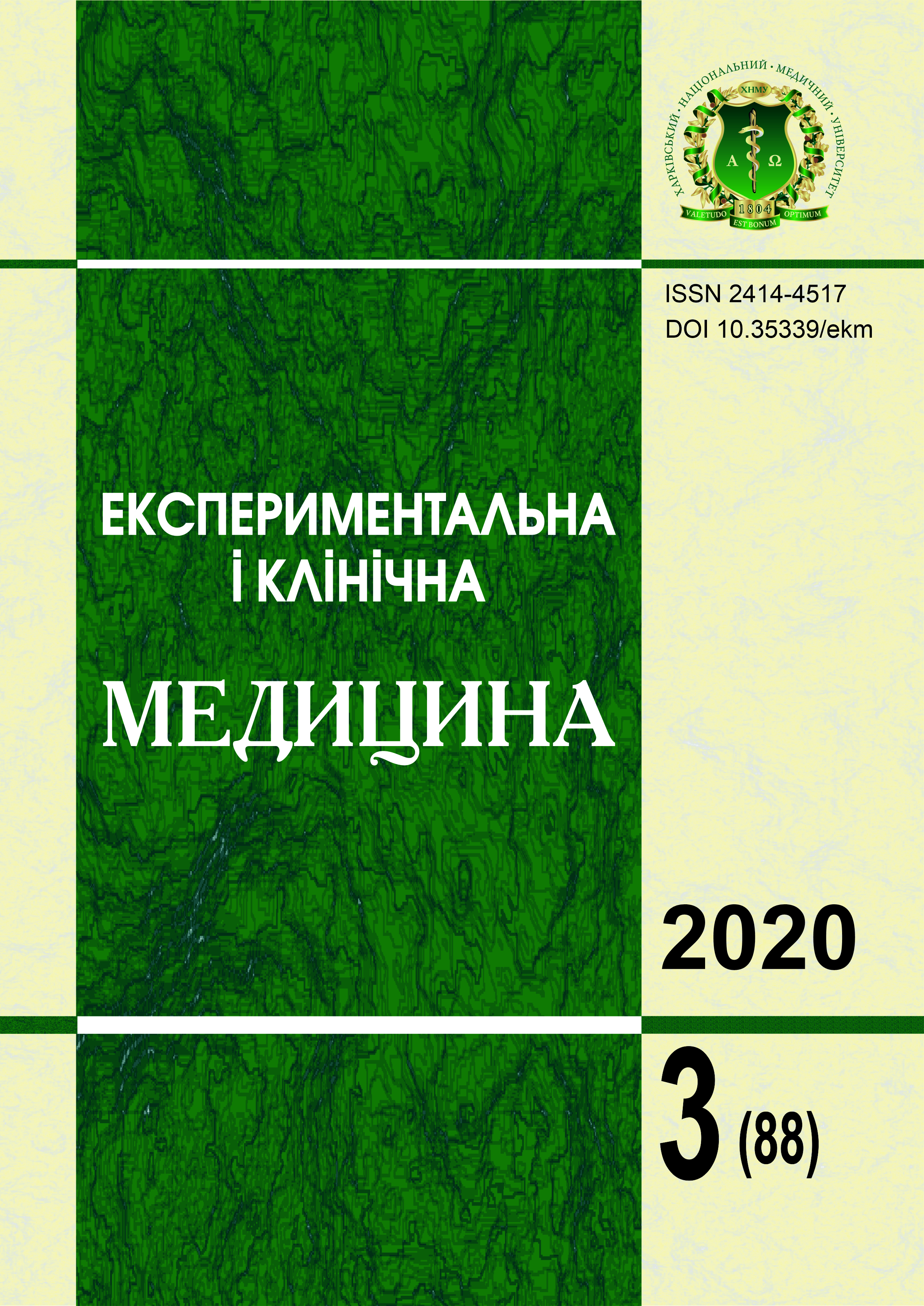Анотація
Проаналізували фармакотерапію 203 хворих на серцеву недостатність (СН), які перенесли імплантацію електрокардіостимулятора (ЕКС), залежно від наявності супутнього цукрового діабету (ЦД) 2-го типу та ефективності імплантації ЕКС. Імплантацію ЕКС вважали вдалою за умови підвищення кінцевого діастолічного об'єму лівого шлуночка на 15 % через 12 міс. після операції. Перед та після імплантації ЕКС хворі отримували інгібітори ангіотензинперетворюючого ферменту, блокаториренін-ангіотензину, антиаритмічні засоби, діуретики, статини, антиагреганти/антикоагулянти. Гарна відповідь на імплантацію ЕКС дозволила зменшити необхідність призначення діуретиків, антиаритміків, скоротити добові дози сечогінних. Призначення дапагліфлозину з метою компенсації рівня глікемії асоціювалось з більш частим досягненням гарної відповіді на ЕКС, поліпшенням перебігу СН. Основні напрямки фармакотерапії хворих на СН, які перенесли імплантацію ЕКС, відповідають сучасним вимогам. Додаткове призначення другорядних метаболічних препаратів з недоведеною ефективністю призводить до поліпрагмазії, зменшення призначень препаратів з доведеною ефективністю.
Ключові слова: серцева недостатність, електрокардіостимулятор, цукровий діабет, фармакотерапія, дапагліфлозин.
Посилання
Ponikowski P., Voors A.A., Anker S.D., et al. (2016). ESC Guidelines for the diagnosis and treatment of acute and chronic heart failure: The Task Force for the diagnosis and treatment of acute and chronic heart failure of the European Society of Cardiology (ESC) Developed with the special contribution of the Heart Failure Association (HFA) of the ESC. European Heart Journal, vol. 37, issue 27, pp. 2129-2200. DOI: 10.1093/eurhe artj/ehw128.
Voronkov L.G. (Compiler). (2017). Rekomendatsiyi Asotsiatsiyi kardiolohiv Ukrayiny z diahnostyky ta likuvannya khronichnoyi sertsevoyi nedostatnosti [Recommendations of the Association of Cardiologists of Ukraine for the diagnosis and treatment of chronic heart failure]. Kyiv, 68 p. Retrieved from: http://strazhesko.org.ua/upload/rekomendaciyi-hsn-a6-ost.pdf [in Ukrainian].
ICD-11 for Mortality and Morbidity Statistics (Version 09/2020). Retrieved from: https://icd.who.int/browse11/1-m/en
Filippatos T.D., Liberopoulos E.N., Elisaf M.S. (2015). Dapagliflozin in patients with type 2 diabetes mellitus. Ther Adv EndocrinolMetab, vol. 6, issue 1, pp. 29-41. DOI: 10.1177/2042018814558243.
Filippatos T.D., Liontos A., Papakitsou L, Elisaf M.S. (2019). SGLT2 inhibitors and cardioprotection: amatter of debate and multiple hypotheses. PostgradMed., vol. 131, issue 2, pp. 82-88, DOI: 10.1080/00325481.2019.1581971.
Filippatos T.D., Tsimihodimos V., & Elisaf M.S. (2016). Mechanisms of blood pressure reduction with sodium-glucose co-transporter 2 (SGLT2) inhibitors. Expert Opin Pharmacother, vol. 17, issue 12, pp. 1581-1583. DOI: 10.1080/14656566.2016.1201073.
Snorek М., Hodyc D., Sedivy V., et al. (2012). Short-term fasting reduces the extent of myocardial infarction and incidence of reperfusion arrhythmias in rats. Physiol Res., vol. 61, issue 6, pp. 567-574.
Packer M., Anker S.D., Butler J., Filippatos G., Zannad F. (2017). Effects of sodium-glucose cotransporter 2 inhibitors for the treatment of patients with heart failure: Proposalof a novel mechanism of action. JAMA Cardiol, vol. 2, issue 9, pp. 1025-1029. DOI: 10.1001/jamacardio.2017.2275.
Kosiborod M., Cavender M.A., Fu A.Z., et al. (2017). Lower risk of heart failure and death in patients initiated on sodium-glucose cotransporter-2 inhibitors versus other glucose-lowering drugs: The CVD-REAL study (Comparative Effectiveness of Cardiovascular Outcomes in New Users of Sodium- Glucose Cotransporter-2 Inhibitors). Circulation, vol. 36, issue 3, pp. 249-259. DOI: 10.1161/ circulationaha.117.029190.
Birkeland K.I., Jorgensen M.E., Carstensen B., et al. (2017). Cardiovascular mortality and morbidity in patients with type 2 diabetes following initiation of sodium-glucose co-transporter-2 inhibitors versus other glucose-lowering drugs (CVD-REAL Nordic): a multinational observational analysis. Diabetes Obes Metab, vol. 5, issue 9, pp. 709-717. DOI:10.1111/dom.l3081.
Monami M., Dicembrini I., & Mannucci E. (2017). Effects of SGLT-2 inhibitors on mortality and cardiovascular events: a comprehensive meta-analysis of randomized controlled trials. Acta Diabetol., vol. 54, issue 1, pp. 19-36. DOI: 10.1007/s00592-016-0892-7.
McMurray J.V., DeMets D.L., Inzucchi S., Kober L., Kosiborod M.N., Langkilde A.M., & Martinez F.A.A. (2019). Trial to evaluate the effect of the sodium-glucose co-transporter 2 inhibitor dapagliflozin on morbidity and mortality in patients with heart failure and reduced left ventricular ejection fraction (DAPA-HF). Eur J Heart Fail, vol. 21, issue 5, pp. 665-675. DOI: 10.1002/ejhf.l432.
McMurray J.V., Solomon S.D., Inzucchi S.E., Kober L., Kosiborod M.N., Martinez F.A., Ponikowski P, Sabatine M.S., et al. (2019). Dapagliflozin in Patients with Heart Failure and Reduced Ejection Fraction. The New England Journal of Medicine, vol. 381, issue 21, pp. 1995-2008. DOI: 10.1056/NEJMoal911303.

